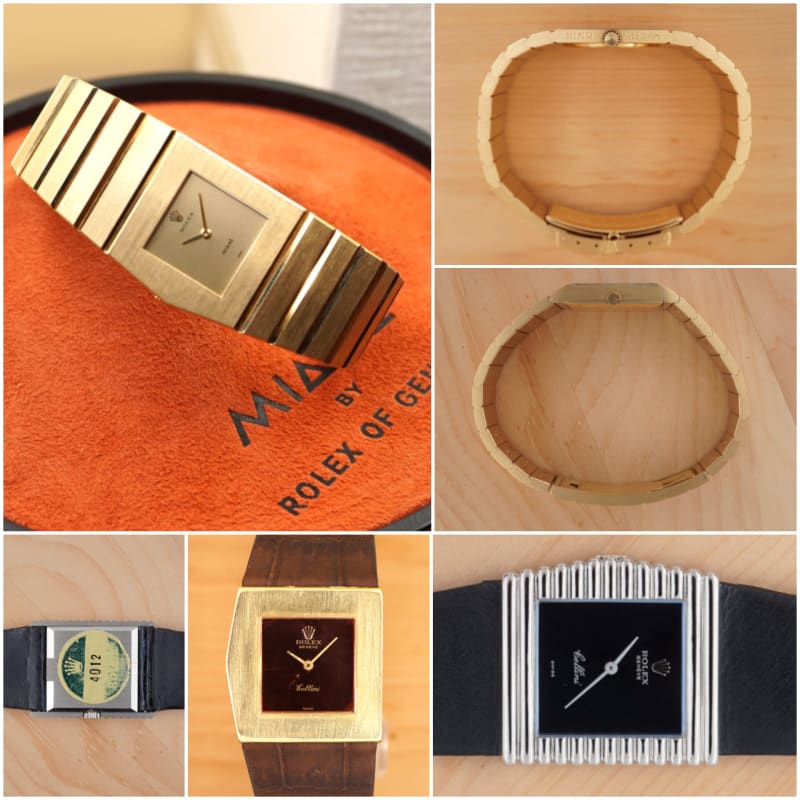Our series #SameOrDifferent compares... now, the Rolex Midas to the Rolex Cellini-Midas -- we really love to compare and we did so many times before, here: *klikk.
The original Rolex Midas ref9630 was made in less than 900pcs (144 in whitegold and approx 700 in yellowgold) between 1962 and 1972 and it was the most special Rolex, the most expensive and the most exclusive: the Rolex to be gifted, when the reason is not 25y on the die cutter. Notabene: All this is based on our research and details could be found here (*klikk). Now, for these 10y this very limited edition (it could be assumed that Rolex knows every initial owner of this numbered watch and holds quite an illustrious database here) was a standalone series in the Rolex offerings: the Midas was a line next to the Oyster- and Cellini-line -- but of course: it was a late and personally very important project of Hans Wilsdorf and an integration into another line (ie. Cellini), would devalue this extraordinary position.
It was an exclusive and expensive watch and after 10y the chapter of this limited edition was closed -- by making slight adjustments in design, changing the name to ref3580 and moving it into the Cellini-line. But, alas! Right with this switch to Cellini the gold price began to move significantly: from USD35 to USD70 in 1972 -- a doubling in price in just two years. And this while it has been fixed at the price of USD35 for more than 30 years. It does not need much fantasy to imagine that one or another watchbrand was caught on the wrong foot by this swing. And guess what: it didnt stop there, instead this was just the beginning. Another two years later, in 1974 the price reached USD197 -- almost a tripling from the already doubled 1972-level. Yes, and so Rolex did that: they started to print a catalog and price-list semi-annual or maybe even weekly... maybe. But for sure they removed the 200g-weighting ref3580 hastily, replacing it with the ref4315 or others -- they came up with dozens of references --, which all had a thinner bracelet in common. And for a reason: the original design had a similar thickness of case and bracelet -- that made it a beautiful, high quality icon and trendsetter (Piaget Polo etc) and comfortable wearer even with its weight of 200g. But this was basically impossible to sell with a goldprice moving from USD35 to USD197 in just four years -- not to mention the extreme volatility: USD114 was the minimum price in 1974 and USD197 the maximum -- the customer wants to think and sleep one night before making the purchase of the golden Rolex? "I am very sorry, Sir but I have to have a decision in the next 15 minutes, before I get a new price list by fax from Geneva."
So, the design was changed, the bracelet was getting thinner and a shallow single-folding clasp introduced instead of the voluminous double-folding clasp. And the solid gold edge was removed from the case -- have you ever wondered why they came up with symmetrical Cellini-Midas? Thats why. But even here nothing stopped: neither the goldprice, nor the hasty and nervous reactions by Rolex to reduce the impact of that price increase by reducing the mass of gold used. Gold hit USD840 in 1980 and Rolex thinned the cases and bracelets even more and introducing the Cellini-Midas on a leather strap (ref4017 etc) in the mid 1970s. And although it has the Midas-edge again, this is not the same thing, anymore: The case is completely hollow (yes, the once solid edge is hollow) and a thin pressed caseback while it was a screwed and solid case with the original Midas and the early Cellinis-Midas.
We can summarize: The reaction of Rolex to the explosion of the goldprice is perfectly visible in the Midas & esp the Cellini-Midas. There were different reactions of other brands -- not less interesting and we will outline these in a future post of the #GoldPlusWatches-series (*klikk).
Notabene: Many Rolex enthusiasts claim that a Rolex Cellini-Midas is basically the same as a Rolex Midas -- I think it became obvious there are significant and important differences and even more: there is some irony in this claim, as it is usually expressed by the same persons that look for any micro-deviation at the dial of a Submariner or a unusual crown on a Daytona and make a big thing out of it: "How important -- a Submariner with a green inverted 6 Ragazzi-dial".
NB2: The thin-case leather-strap Cellinis are now valued approx USD10'000 by the market (not imo) and in this light a ref3580 imo cannot be valued less than USD60'000 and an original ref9630 has to have a price tag of >USD100'000 -- all else does not make sense given the differences in rarity, relevance and quality. But this is what happens at the moment: the market dried up in ref9630 and even a well preserved ref3580 Cellini is not easy to get anymore.
